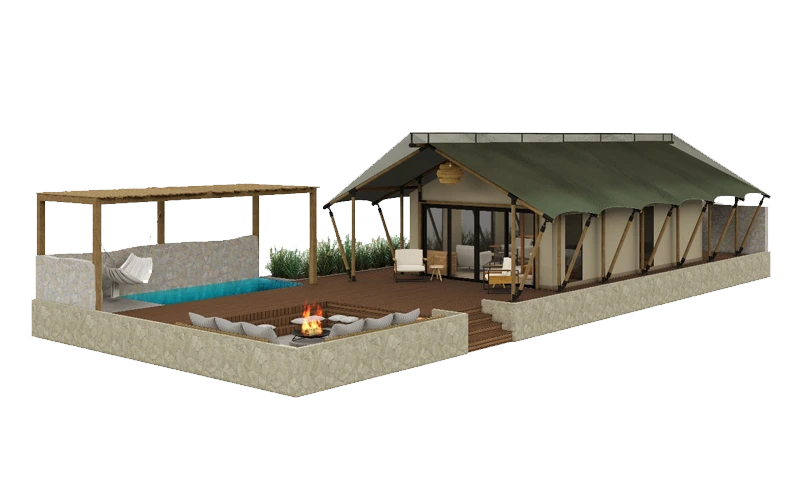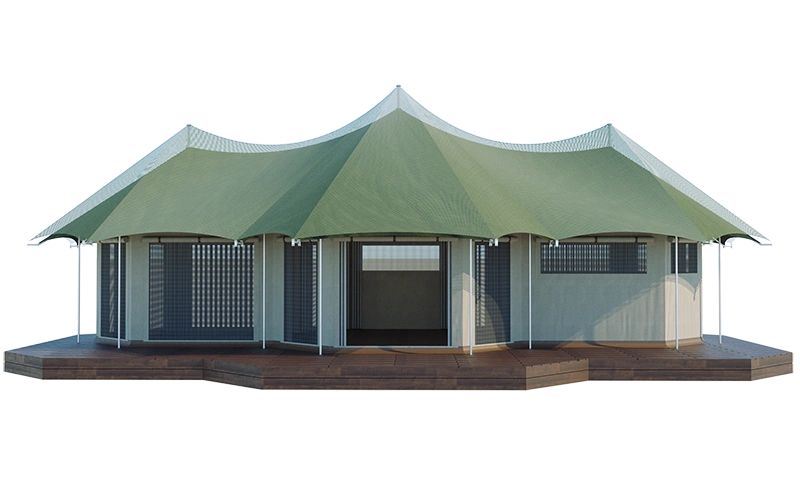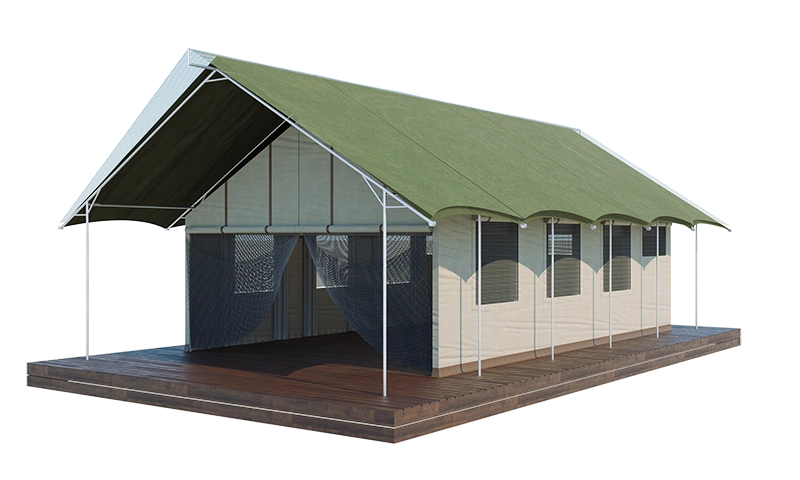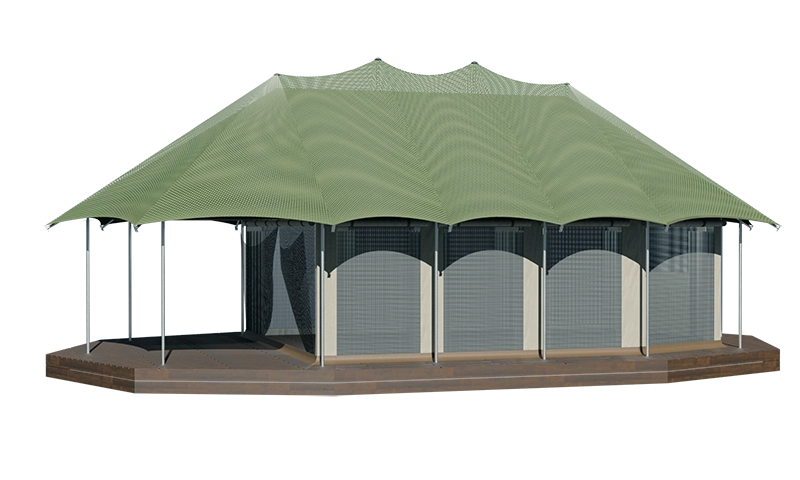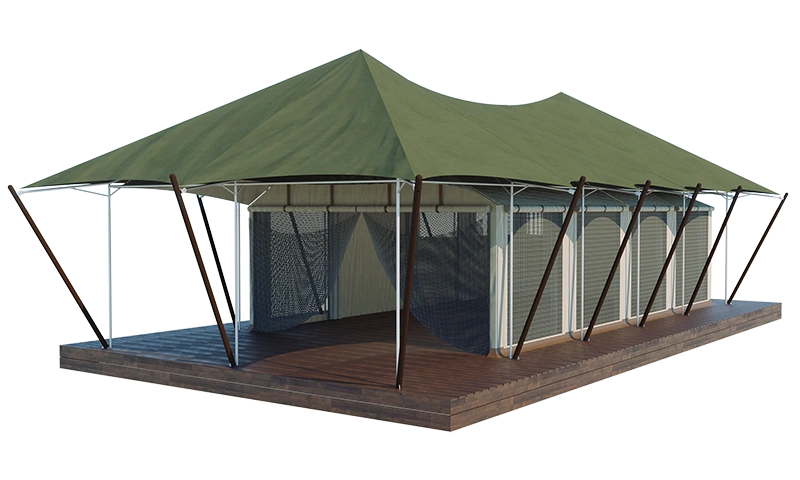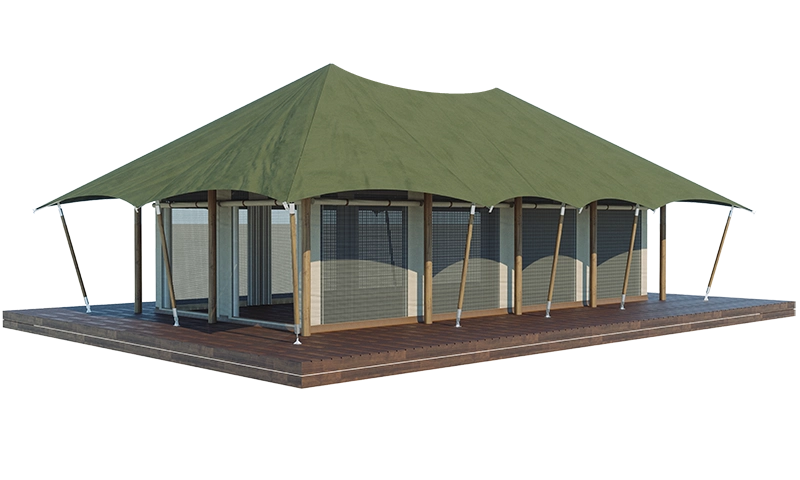THEY’RE POPPING UP EVERYWHERE, FROM MEXICO TO LAOS—AND LUXURY TRAVELERS CAN’T GET ENOUGH. HERE’S WHY.
At one point in the mid-2010s, “glamping” became a four-letter word.
A sudden boom in upscale tented accommodations—which ultimately felt neither glamorous nor like camping—saw the trend go from boom to bust as quickly as spaghetti donuts and ramen burgers.
But now, glamping is back, and the glamour factor is through the canvas roof.
Everywhere from Luang Prabang to New South Wales, Tulum to Costa Rica—even in the heart of New York—hoteliers are ditching bricks and mortar walls and ceilings for safari-style tents, many with free-standing bath tubs, fireplaces, wood floors, and outdoor dual-head rain showers. The concept has become so high-end, “glamping” no longer does it justice.
For travelers, the experience offers novelty, digital disconnection, and access to experiences that are at once authentic and Instagrammable (when you get back on Wi-Fi). Think interacting with rescued elephants in northern Thailand at Four Season’s Golden Triangle tented camp, or hot air ballooning over the Rocky Mountains from the Resort at Paws Up, in Montana.
“Kids love it—it’s great for multigenerational trips,” says Jack Ezon, president of Ovation Vacations. “It’s a completely different experience.” He says clients come to him with tented properties on their bucket lists—or simply looking for something “different” and outdoorsy.
Just don’t expect these trips to come cheap.
“We’ve seen some of our tents going for $5,000 a night,” says Luca Franco, founder and chief executive officer of Luxury Frontiers, a soup-to-nuts design firm and consultancy that specializes in ultra-high-end tented camps such as Abu Camp and Eagle Island Lodge, two iconic properties in Botswana. Among his upcoming projects: a One&Only resort in Riviera Nayarit, Mexico; a private island in the Maldives; and a tented village in Utah. At all of them, guests will pay a premium to camp out under the stars. With butler service, of course.
HOW TENTS LURED THE ULTRA-RICH
When Franco got into the luxury tent business, the market was concentrated in Africa’s game parks. “All I knew was that 50 to 70 percent of the guests at the top-tier safari lodges in Africa were coming from the U.S,” he says. That signaled to him that the safari-style concept might have legs in other naturally pristine destinations.
“I saw a lot of demand and little supply,” Franco explains. And as the market for eco-sensitive and off-the-grid vacations has spiked, tented camps have benefited even more.
Franco and his contemporaries have converted that demand by thinking of these projects not just as fancy tents, but as conduits to unique experiences. “We flip the concept of designing the box and filling it with activities,” he says. “Instead, we design the activities first and then design the box around that.”
At the upcoming Shinta Mani Wild, on the border of Cambodia’s Cardamom National Park, guests will be able to eat at a restaurant tucked under a waterfall and zipline into the resort before sleeping off their adventures in Jackie O-inspired tents. It will open in December. At the One&Only in Riviera Nayarit, coming in 2020, guests will practically be able to roll out of their beds and onto a horse for sunset rides on a white, powdery beach. And when it opens next fall, Nayara Tented Camp in Costa Rica will offer budding conservationists an up-close look at the country’s dwindling sloth population.
“I grew up as a kid going camping,” recalls Nayara’s owner and mastermind, Leo Ghitis. “At this stage in our lives, we like the nostalgia of camping, but with all the conveniences and luxuries.”
At his property, that will mean hot springs-fed plunge pools on each private deck, interiors that fuse English and Spanish colonial styles, and closets so large that Paris Hilton could waltz in and feel right at home. Plus, he says, “The royal families of the Middle East typically have homes in ultra-luxury tents—so clearly, there is something to it.”
WHY THEY’RE (MOSTLY) GREAT FOR BUSINESS
According to Franco, the master tent-builder, hoteliers who invest in tented projects can expect to generate 20 percent to 40 percent more in revenues than their six-star bricks-and-mortar counterparts, and construction costs can be as much as 50 percent lower—particularly in cases where the tents are just one part of an existing resort that has already established the necessary infrastructure. Still, this doesn’t make these camps affordable or easy to build.
“We are in the luxury or beyond-luxury categories,” explains Franco, “so everything has to be truly custom.” When one leading hospitality brand asked him to design a tent that could be replicated in Turkey, the Bahamas, Marrakesh, and Mexico, he said no: “All these places have different climates. There’s no wind in Turkey, but in Holbox, Mexico, the wind is very strong; in the Bahamas, you need tents that can be completely removable for hurricane season; in Tulum, you need something fit for the jungle; and in Morocco, you have extreme heat to deal with.”
Catering to these varying weather patterns—plus consumers who might need family-friendly setups—can add up to a lot of costly customizations. Some are moveable, as you’d tend to think when it comes to tents; others aren’t. Some have permanent decks with in-ground plumbing, and others don’t. As a result, Franco’s tents can cost from $50,000 to $1 million each. Plus, exposure to the elements means they need to be carefully maintained and replaced every few years.
Of course, you can spend less (and charge less). Look no further than Collective Retreats, a brand built on simpler glamping principles, with locations in Yellowstone National Park and Governor’s Island, with views of Manhattan’s Financial District. Its tents start at $150 per night.
In Australia, Sierra Escape, Nashdale Lane, and Bubbletent are all new concepts that are less full-service hotel, more unconventional accommodations, which you can book for less than $300.
“We wanted to do something completely different and immerse guests in the environment without taking away the luxury,” says Cameron D’Arcy, co-founder of Sierra Escape, a three-tent camp in New South Wales, Australia. As a marketing professional, he says the concept is a no-brainer: “Thanks to the Instagram appeal, the product almost markets itself.”
THE BEST NEW RESORTS IN THE WORLD
As much as the mid-range glamping resort is thriving, it’s the ultra-high-end proposition that’s truly resonating with travelers.
Sonny Vrebac, co-owner of Bubbletent—a property overlooking New South Wales’s Capertee Valley, the world’s second-largest canyon—says he’s learned this the hard way. He created three different types of tents, one fancier than the next, only to diagnose himself with what he calls the “grand cru Champagne problem.” He gets disproportionate demand for the highest-end of the bunch, a bubble with both climate control and its own outdoor, wood-fired hot tub.
Back in Costa Rica, Nayara’s Ghitis shouldn’t have that problem. “I’ve already blown my budget 10 times,” he jokes, saying he’s working toward creating the most luxurious tented camp in the world. The project, he says, has been especially difficult, considering the infrastructural demands of building on a jungly mountainside and adding plumbing that’s fit for high-pressure, hot springs water.
“But if what you were looking for was to maximize profits, you wouldn’t be building a tented camp,” he says. Conventional materials would cost far less to weatherproof and maintain on his site. “You do it because you’re thinking about legacy.”
